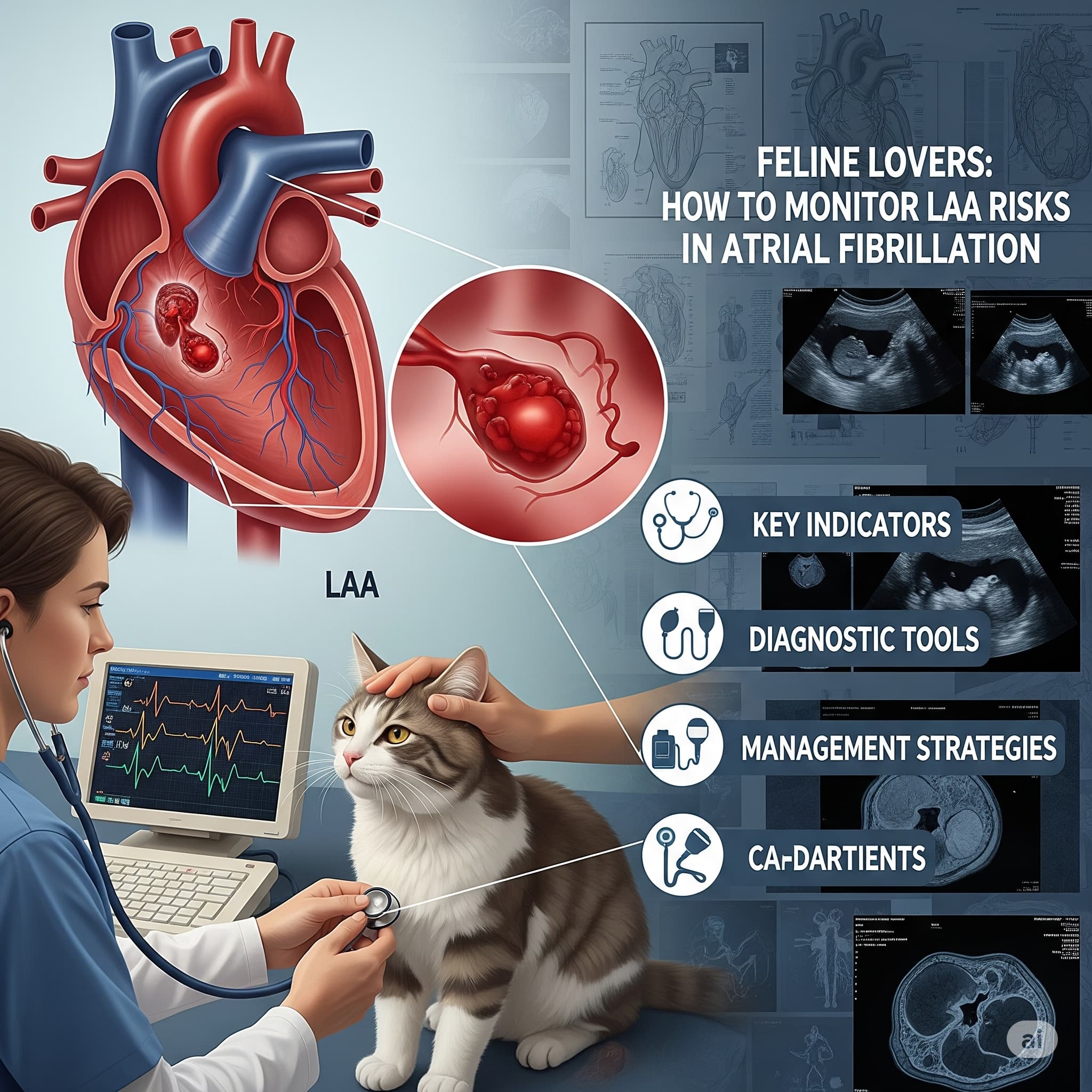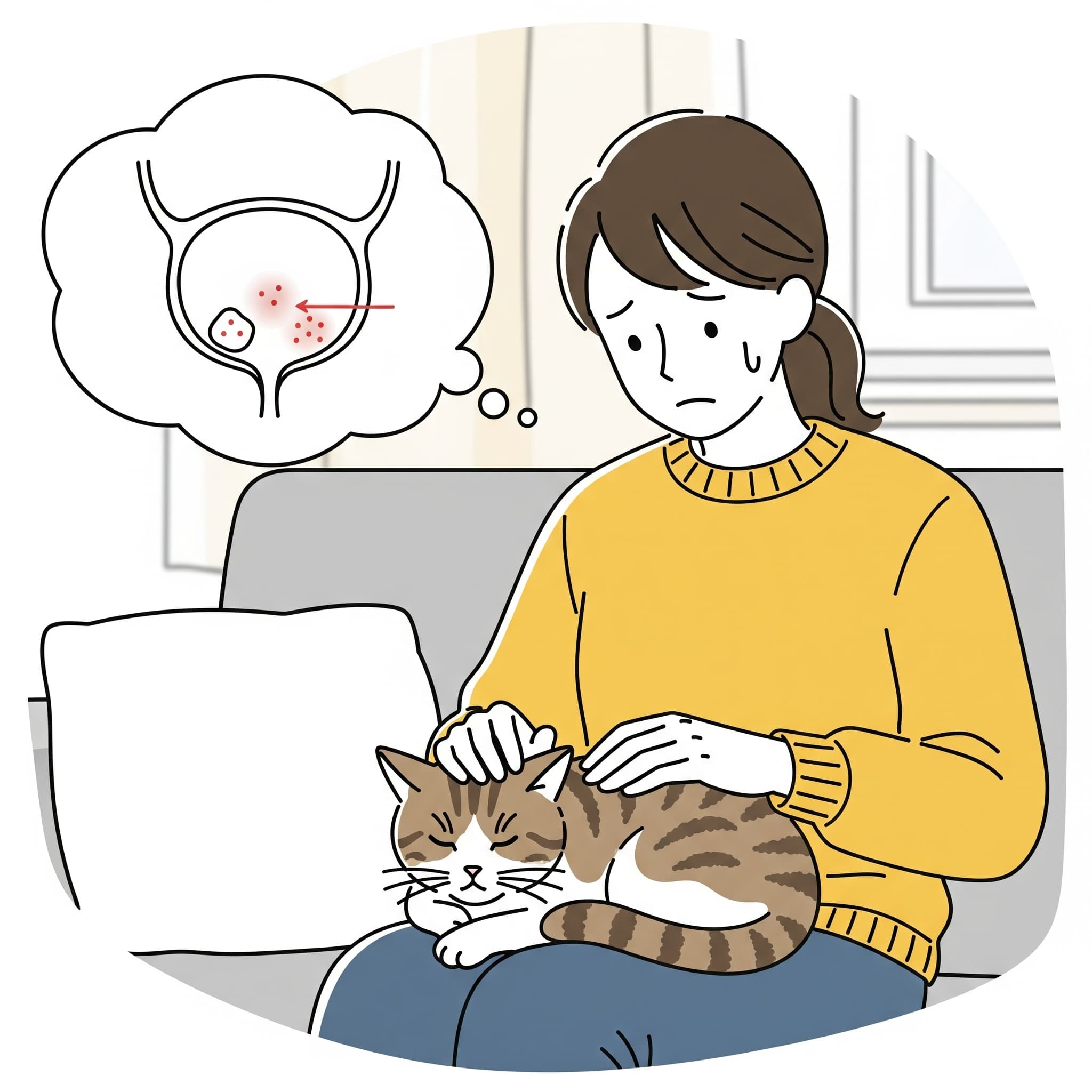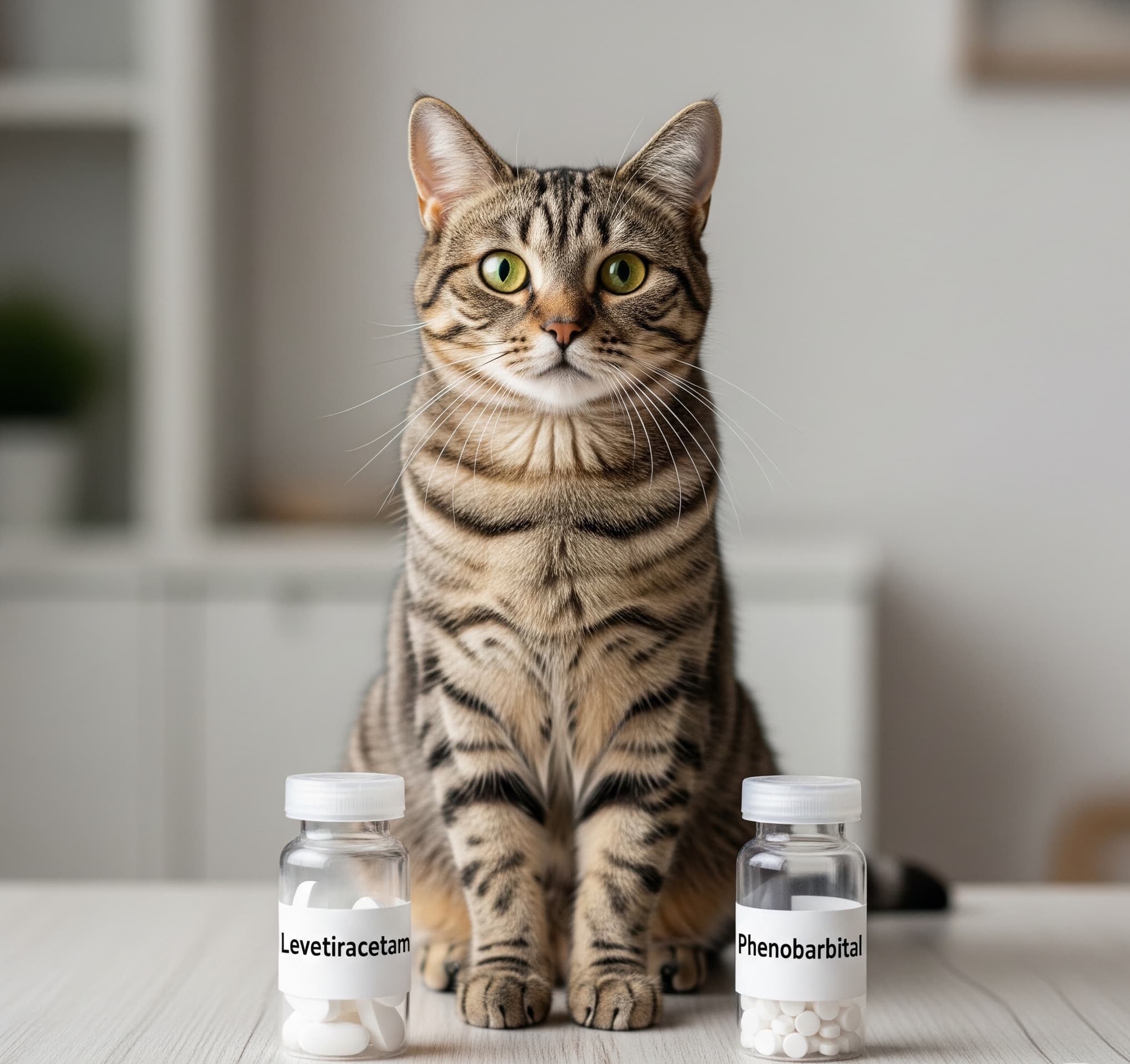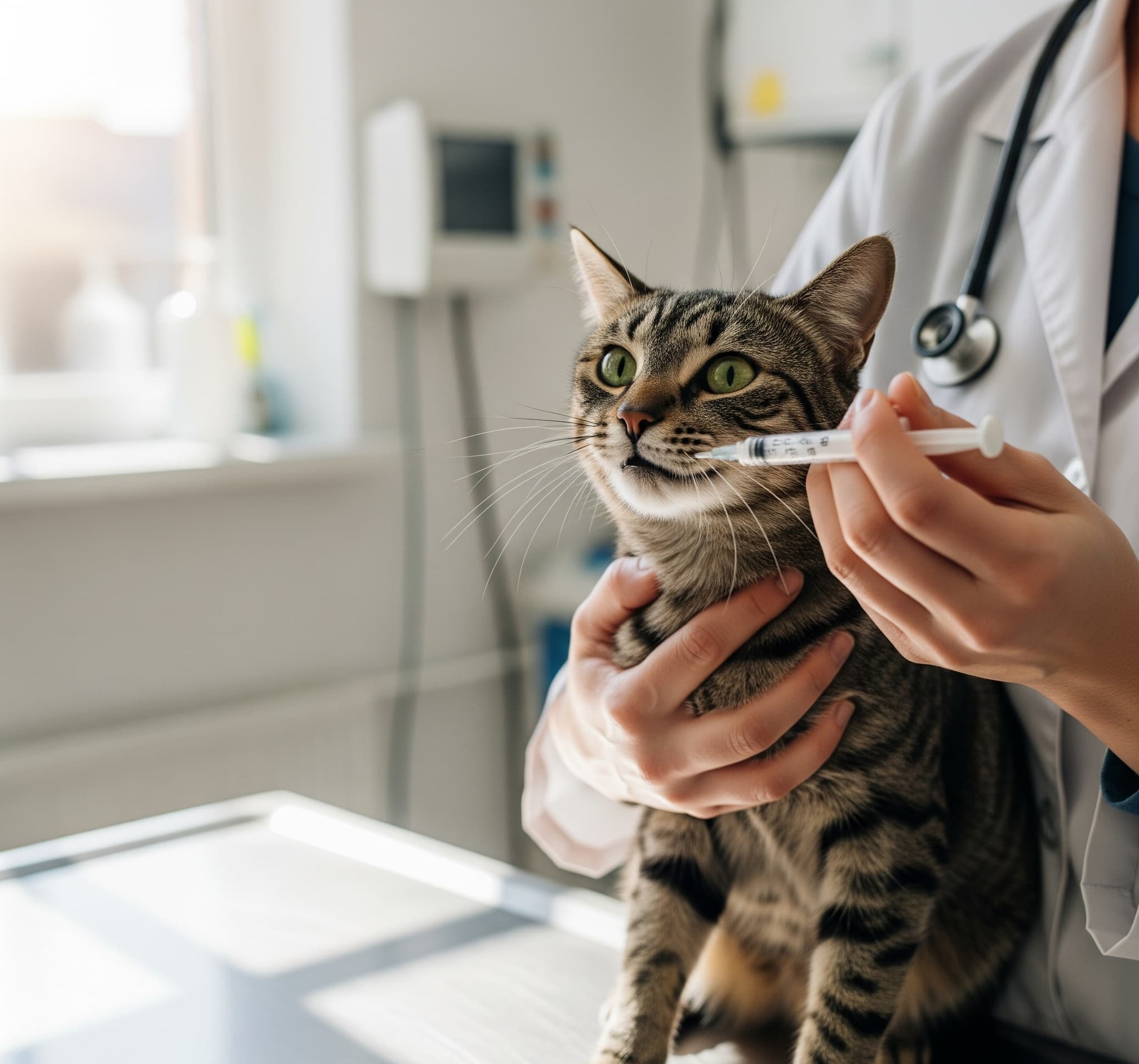Feline Lovers: How to Monitor LAA Risks in Atrial Fibrillation
Find out how to track thrombus risks in the left atrial appendage in cats with atrial fibrillation. Easy recommendations for cat owners to protect their kitties’ health.
Introduction
As a passionate cat owner, it’s only natural that you desire your feline friend to have a long and healthy life. If your cat has been diagnosed with atrial fibrillation, however, you might be stressed about the possible serious complications that may arise, such as the left atrial appendage (LAA) thrombus— a thrombus that can dangerously form in the heart. Don’t be alarmed! This guide will allow you to understand and keep track of this condition with the needed assurance. We will break it down into simple steps, from early detection to collaboration with your veterinarian. Interested to get started? This is what we will cover:
- The Most Important Aspects of Atrial Fibrillation and LAA Thrombus
- Cat Thrombus Symptoms Awareness
- LAA Risk Monitoring Diagnostic Instruments
- Thrombus Management and Prevention: Simple Actions
- Feline AFib and Thrombus Most Frequently Asked Questions
Together, let’s ensure that your cat’ s heart remains healthy!
The Most Important Aspects of Atrial Fibrillation and LAA Thrombus:
Alright, let’s discuss the important details. Atrial fibrillation (AFib) is a condition in which your cat’s heart beats in an irregular fashion, and a portion of the heart known as the left atrial appendage
Destination: legs or brain. If these areas are affected, it can lead to life threatening complications. It’s like a traffic jam in your cat’s heart—things aren’t flowing smoothly, and the potential for problems builds up. If your cat suffers from AFib, particularly older cats or those with prior heart conditions, your cat will be higher risk with these conditions. Being informed helps. Talk to your vet and discuss your cat’s details, and don’t hesitate to ask questions because for you, it is your fur baby.
Cat Thrombus Symptoms Awareness
What to look for? Symptoms of thrombus are both subtle and vague. Sudden inability to move, restricted to ventral recumbent position due to a blood clot is AFib. Additionally, some of the following signs can be hot to breathing rate: shallow and fast, lethargic to motionless—seriously scary, and a stream of other concerning behaviors. Cold extremities, a weak core of cat’s timing, overall listless reflex response to energetic stimuli can serve as a blunt indicator. Pay a close watch for abnormal behaviors, particularly in cats with heart problems. Identifying these changes early on can be crucial.
If you notice anything unusual, do not hesitate to call your vet.
LAA Risk Monitoring Diagnostic Instruments
How do vets check for LAA thrombus? Vets use echocardiograms, which are like ultrasounds for the heart, to monitor blood flow and check for clots within the left atrial appendage. Think of it as a live heart performance of your cat. Clotting risks can also be monitored using blood tests and X-rays or CT scans may be done for a more comprehensive view. Some of our feline companions may benefit from newer 3D technology as it becomes available in more clinics. Your vet may recommend echocardiograms to monitor AFib and thrombus risks. Would you like to see the image of a cat heart on an echocardiogram? You may watch it on YouTube.
Thrombus Management and Prevention: Simple Actions
Okay, let’s get into action. As a first step, stick to your veterinarian’s recommendation on medications like anticoagulants. “A” for anticoagulants; these are like traffic cops controlling blood clots. Common ones include clopidogrel or aspirin, but never give meds without a vet’s okay. Next, stress reduction for your cat. Calming environments aid heart health. Think cozy beds or quiet spaces. Heart-healthy pet food also helps. Proactive vet visits aid issue discovery. Not rocket science, just need to stick to a routine. Oh yes, and for those cat owners out there, set reminders for medications. You will be showered with extra purring if you do.
FAQs on Feline Afib and Thrombus
Have questions? As always, we do have answers!
Can a thrombus occur immediately after the diagnosis of AFib? Not always, but it’s possible. AFib does increase your risk over time, especially without treatment. Regular monitoring helps catch issues early.
How much do vet visits for AFib cost? Costs vary, but expect $100-$500 for exams and imaging like echocardiograms. Like always, check with your vet for specifics and payment plans.
Are some cat breeds more at risk?
Yes, some breeds like Maine Coons and Ragdolls with HCM (Hypertrophic Cardiomyopathy) are more susceptible. Make sure to monitor them closely!
Conclusion
While caring for a cat with atrial fibrillation may feel like a daunting task, remember that you’re not alone. With a good understanding of LAA thrombus dangers, symptom monitoring, and a good working relationship with your veterinarian, you can keep your kitty comfortable and healthy. Regular checkups, medication, and a calm atmosphere are your greatest assets. Do you feel empowered to manage your cat’s heart health? Contact your veterinarian to establish a monitoring program and provide this heart health guide to cat lovers who may benefit from it. Do you have a tale to tell about your cat’s health journey? We’d love to hear it in the comments below!




Post Comment